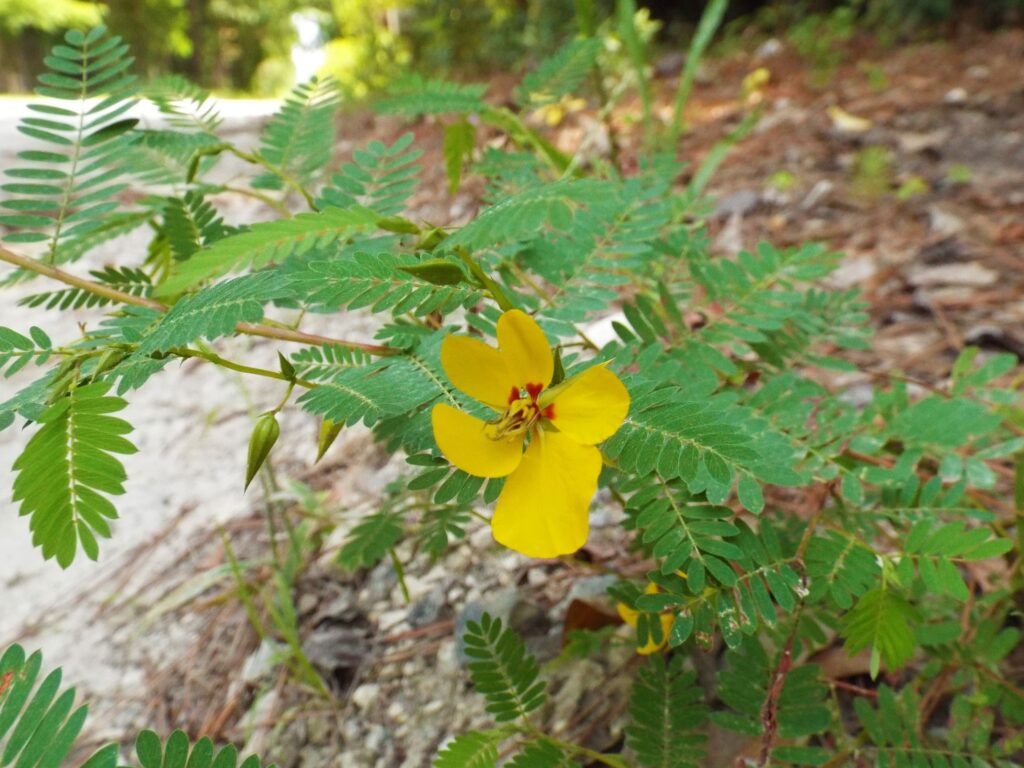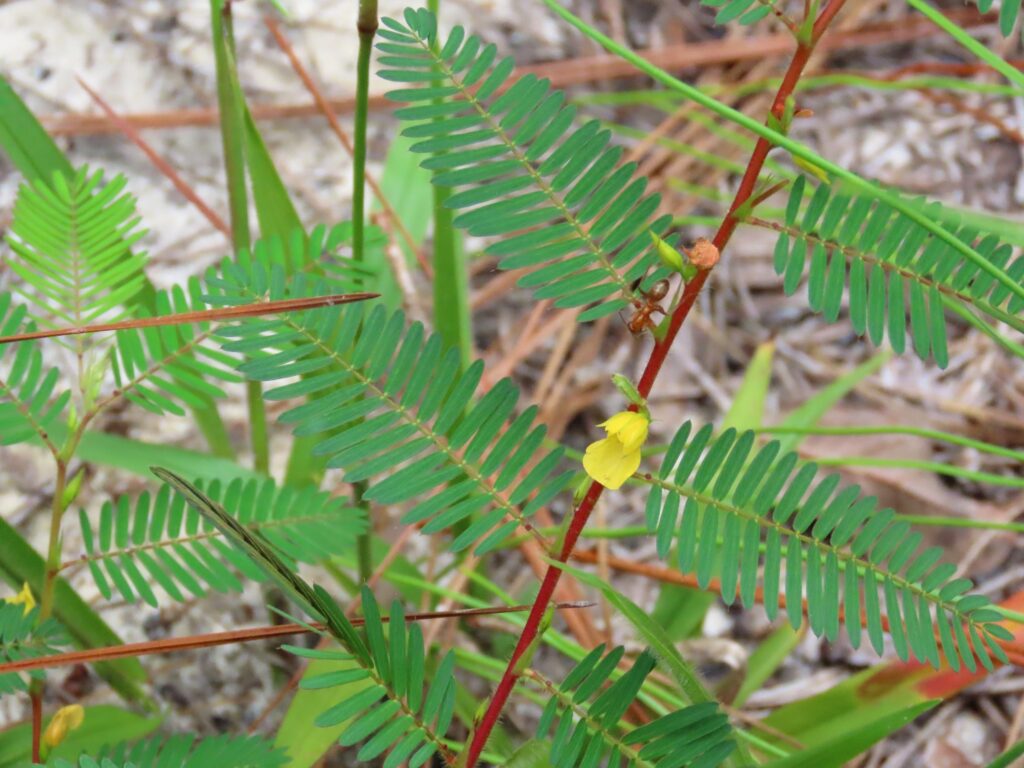




This week for Flora and Fauna Friday, it’s another large lanky legume of ecological significance, the Partridge Peas (Chamaecrista spp.).
Partridge Pea (C. fasciculata), and its smaller bashful brother Sensitive Partridge Pea (C. nictitans), can be found all across South Carolina and the Southeast. Partridge Peas grow most often in disturbed areas, like field edges, roadsides, clear cuts, power line right-of-ways, and burned forests. Partridge Pea can thrive on practically all our soils but Sensitive Partridge Pea is best adapted to sandy soils. Both species are annuals that are very similar in appearance, except that Sensitive Partridge Pea is smaller in size, only growing about a foot tall, and with smaller leaves and flowers. Partridge Pea is a large, sprawling annual legume that can grow into a head-height bush. Its leaves are finger-length and feather-shaped and its stems can be a vibrant red in sunny habitats. The flowers are an inch wide, five-petalled, and golden-yellow with crimson spots near the center. Additionally, the leaves of both species will fold up flat when touched! The fruit of Partridge Pea is a narrow flat bean full of square, black seeds. These seeds have made the plant a critical cornerstone in many wildlife management plans.
Partridge Peas, as the name implies, have some link to partridges, or what we refer to as quail in America. In the South Carolina Lowcountry we have but one quail, the Northern Bobwhite (Colinus virginianus). Bobwhites love Partridge Pea seeds. They are highly nutritious and sustain many a quail through the winter. The plants themselves also provide great cover for quail from aerial predators as they forage. As such, Partridge Pea is a great addition to any habitat restoration project and its management is a significant concern for property owners and wildlife managers interested in restoring and managing for Bobwhite populations. The benefits don’t stop with quail either, as many wildlife eat its seeds and leaves or take cover under its boughs. Today’s plant is also the host plant for several butterfly species, including the Cloudless Sulphur, Little Yellow, and Ceraunus Blue.